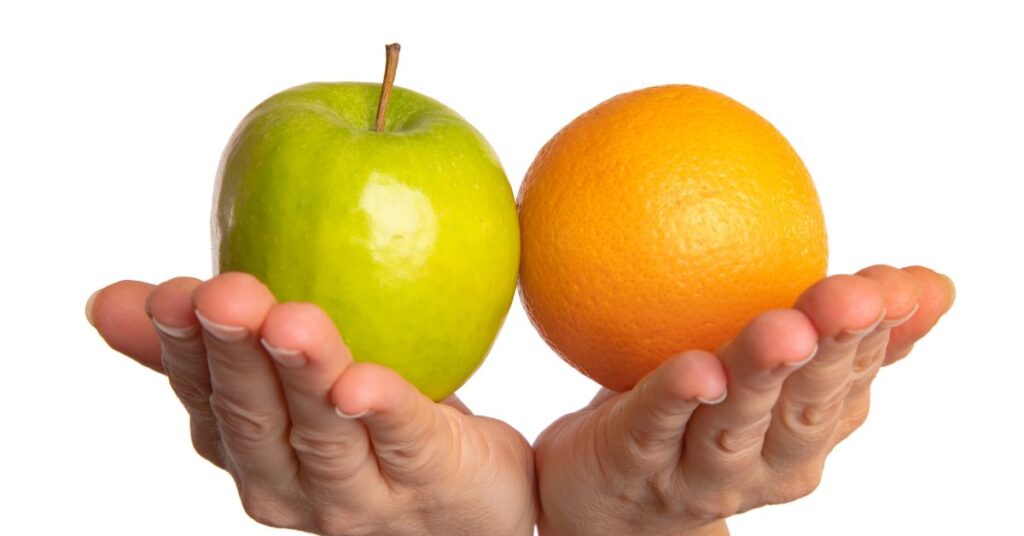What is critical thinking in Swahili? According to Google Translate, critical thinking in Swahili is “Kufikiria kwa makini,” which can be loosely translated as thinking carefully.
Critical thinking is one of the pillars of the CBC curriculum. This particular pillar, Critical Thinking and Problem Solving, is translated as “Uwazi Kina na Utatuzi wa Matatizi.” Therefore, critical thinking could also be “Uwazi Kina” if we follow the CBC translation.
Which translation should you go with?
As a parent with kids taking the CBC curriculum, I would go with “Uwazi Kina,” as that’s the translation the curriculum gives for critical thinking.
However, whichever translation you use should suffice since critical thinking can’t be translated into a single word.

What Do You Mean by Critical Thinking?
Critical thinking is a mental process that allows you to analyze information, evaluate arguments, and form sound judgments.
It goes beyond accepting information at face value and encourages you to question, analyze, and reason effectively.
It involves using your mind deeply and carefully to form a judgment based on reason, logic, and evidence.
Some of the key aspects of critical thinking are:
- Asking questions: This involves questioning assumptions, biases, and the underlying evidence supporting information.
- Analyzing arguments: This means breaking down arguments into their component parts and evaluating the strength of the logic and evidence presented.
- Evaluating the validity of information: This involves considering the source, credibility, and potential biases of information.
- Making informed decisions: This involves using the skills above to form well-reasoned and justified conclusions.
Why Is Critical Thinking Important?
With everything that’s happening in the world today, and the number of informational sources, it makes sense to teach kids how to use critical thinking. This way, they can question what they hear, analyze it, and make and decide for themselves whether to trust the information or not. Other benefits of critical thinking include:

1. Informed Decision-Making
We live in the information age. Facebook, Instagram, TikTok, YouTube, and Google are filled with tons of valuable information, but there is also tons of garbage there.
Critical thinking empowers you to distinguish fact from opinion, evaluate the credibility of sources, and identify misleading information.
2. Problem-Solving and Innovation
Critical thinking equips kids with the tools to tackle complex problems effectively.
By analyzing situations, identifying root causes, and considering various potential solutions, kids can develop innovative approaches and overcome challenges with greater success.

3. Critical Analysis and Comprehension
Critical thinking fosters deeper comprehension of information.
You learn to go beyond surface-level understanding by questioning assumptions, analyzing arguments, and recognizing potential biases.
This skill allows kids to form their own informed opinions based on a comprehensive and nuanced understanding of a topic instead of relying solely on the information source.
Also read: Are Puzzles Good for Kids’ Brains? 3 Reasons to Have Them
4. Lifelong Learning and Adaptability
Critical thinking fosters a growth mindset and prepares your child for lifelong learning.
By becoming adept at questioning, analyzing, and adapting your thinking, your child can continuously learn and evolve in a rapidly changing world.
This skill is crucial for navigating an uncertain future and thriving in an environment with novel information and challenges.
5. Effective Communication and Collaboration
Critical thinking promotes clear and concise communication.
It encourages logically structuring arguments, presenting evidence effectively, and considering diverse perspectives.
Your child learns to communicate their ideas persuasively and engage in constructive dialogue, fostering collaboration, teamwork, and achieving shared goals.

How to Practice Critical Thinking?
1. Embrace Curiosity and Questions
It’s easy to get irritated when you tell your child to do something, and they ask, “Why?” with a straight face.
Back in the day, this would have been met with a slap on the face because we would never ask our parents questions.
However, to practice critical thinking, you need to give your child an opportunity to cultivate a questioning mindset and challenge assumptions they encounter daily.
This involves them asking “why” and “how” questions. They aren’t being rude but simply trying to understand the underlying reasoning.
So, instead of being irritated, explain the reason behind your logic, thus teaching kids to consider alternative perspectives and viewpoints different from their own.
Also read: 7 Ways Puzzles Help with Cognitive Development

2. Actively Engage With Information
Kids today are growing up with TikTok, YouTube Shorts, and Discord, where they find a lot of information.
As they watch, encourage them not to skim information but to analyze the source, evidence, and arguments presented actively.
They should evaluate the credibility of sources, considering their expertise and potential biases.
Luckily, kids are excited when they learn something new. When they come to you excited about the new thing they have learned, question them.
See how the tables have turned. It’s now your time to ask “why and how.”
This helps your child identify logical fallacies in the information they encounter and become a more discerning consumer of information.

3. Challenge Your Own Thinking
90% of the thoughts we have are repeated thoughts. What you thought about today is likely what you thought about yesterday. The same is true for your kids.
Teaching kids to reflect on their biases and assumptions helps them consider alternative explanations and evidence that might contradict their initial thoughts.
This is important, especially because people tend to think more from a negative perspective. By questioning these thoughts, kids learn to look for evidence and demystify the negative Nancy in their heads.
Once new information is received, they can change their mind based on the information and form new arguments.

4. Engage in Open Discussions
Do you remember the debate contests we attended back in school?
Those may have seemed like fun and games, but behind the scenes, we learned to discuss ideas and information with others from diverse backgrounds and viewpoints.
Open discussions, even at home, foster active listening to other people’s perspectives and arguments, presenting your own ideas and providing evidence to support your claim.
In the evening, form this kind of discussion at home when eating dinner or playing games. It may take a few minutes, but your child learns to refine their thinking while considering other people’s perspectives.

5. Practice Problem-Solving
Seek out challenging problems or puzzles that require analysis and creative solutions.
This could be in games like puzzles and other fun forms of learning like riddles (Vintendawili). You could also ask your child what they would do in a certain situation.
Task your child with identifying the problem, considering various solutions and evaluating potential outcomes.
Practice explaining your thought process and reasoning behind your chosen solution and encourage your child to do the same.
Beyond the Classroom
Critical thinking is about shaping the world we want to live in. By teaching kids to question, analyze, and think for themselves, we’re not just building problem-solvers.
We’re building responsible citizens who can navigate a complex world with a critical eye.
So, the next time your kid asks, “Why?” don’t shut it down. It might just be the spark that ignites a lifelong journey of learning, questioning, and positively impacting the world.




